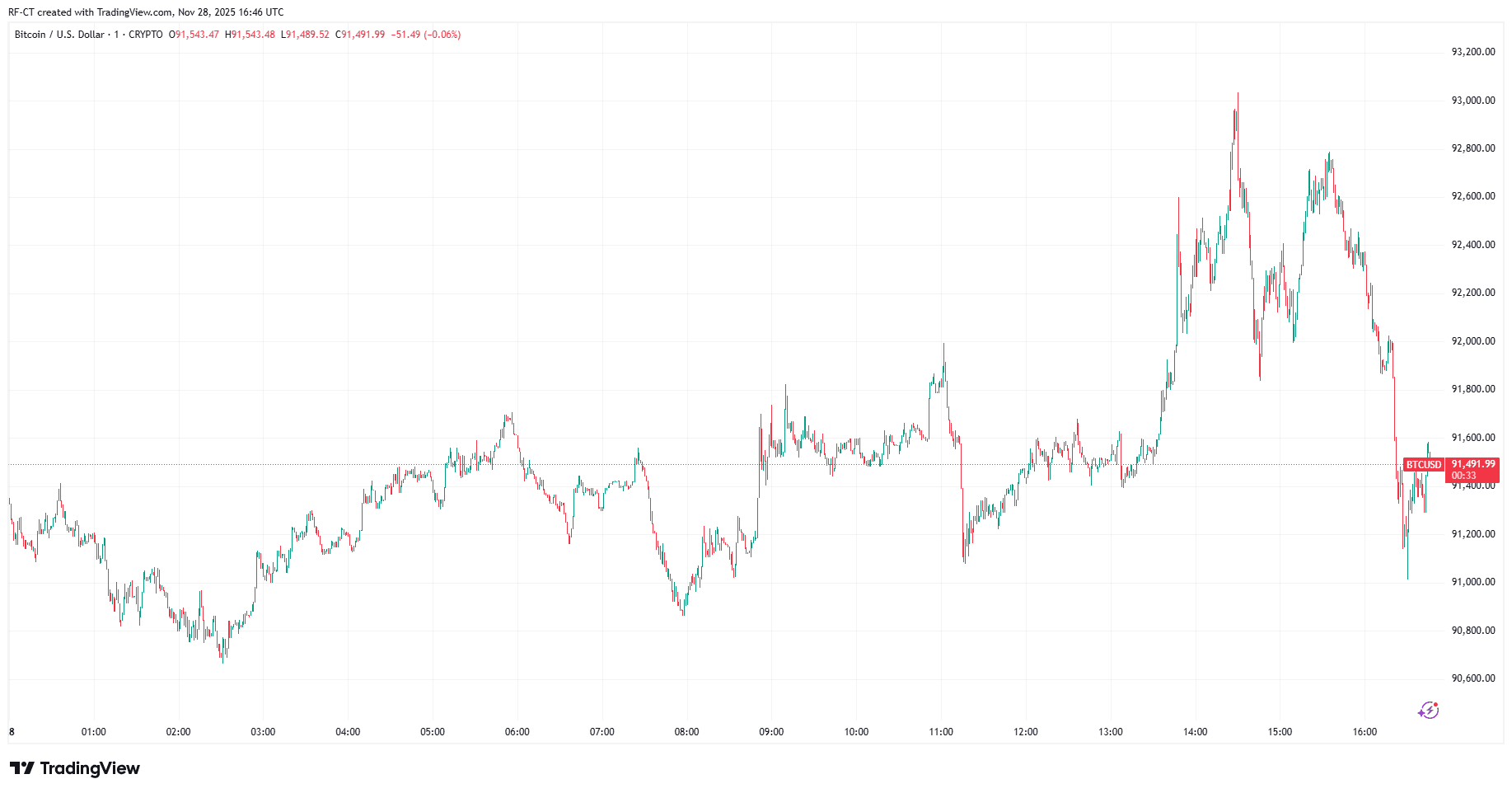Fed's Unchanged PCE Postpones Rate Reductions, Bitcoin's Future Still Unclear
- U.S. core PCE inflation held at 2.9% YoY in August 2025, aligning with forecasts and reinforcing Fed's policy stance. - FOMC projects gradual decline in core PCE to 2% by 2026-2027, supporting 75.5% odds of October 2025 rate cut. - Bitcoin faces mixed outlook amid stable PCE data: $107,200 support critical as macro risks and liquidity shifts drive volatility. - Diverging headline (2.7% YoY) vs core PCE highlights Fed's focus on underlying inflation trends over transitory shocks. - Institutional investors
The core Personal Consumption Expenditures (PCE) price index in the United States, which is the Federal Reserve’s main measure of inflation, held steady at 2.9% year-over-year in August 2025, matching both the previous month’s figure and market expectations US Core PCE Inflation Matches Expectations in August 2025 [ 1 ]. According to the U.S. Bureau of Economic Analysis (BEA), this unchanged result highlights ongoing inflationary pressures, despite earlier hopes for a slowdown U.S. Core PCE Inflation Steady at 2.9% for August 2025 [ 2 ]. The core PCE, which leaves out the more unpredictable food and energy prices, remains a central focus for policymakers as it is closely tied to the Fed’s 2% inflation goal. The indicator’s stability has strengthened the view that the Federal Open Market Committee (FOMC) will keep its current policy unchanged, with no immediate rate changes expected U.S. Core PCE at 2.9% in August – Path for Bitcoin? [ 3 ].
The Federal Reserve’s ongoing emphasis on the core PCE highlights its influence on monetary policy decisions. Experts point out that while the 2.9% rate is still above the target, it represents a cooling from previous highs, indicating that inflation is stabilizing US Core PCE Inflation Matches Expectations in August 2025 [ 1 ]. The FOMC expects core PCE inflation to gradually decline through 2026 and 2027, in line with broader projections of easing price pressures U.S. Core PCE at 2.9% in August – Path for Bitcoin? [ 3 ]. This outlook has eased fears of aggressive rate increases, with markets now assigning a 75.5% chance of a 25-basis-point rate cut in October 2025, up from 70% the day before U.S. Core PCE at 2.9% in August – Path for Bitcoin? [ 3 ]. The Fed’s shift toward potential rate reductions, supported by the core PCE figures, has encouraged a more risk-tolerant attitude among investors.
Financial markets responded with caution to the data release, showing only slight movements in major indices and currency markets US Core PCE Inflation Matches Expectations in August 2025 [ 1 ]. Both the dollar index and leading stock indices experienced minimal changes, reflecting that the results were in line with expectations. In the digital asset market,
The broader PCE index, which factors in food and energy, increased by 2.7% year-over-year in August 2025, up from 2.6% in July U.S. Core PCE at 2.9% in August – Path for Bitcoin? [ 3 ]. This indicates that while headline inflation is slowing, the underlying core elements remain firm. The gap between core and headline PCE highlights the Fed’s focus on more persistent inflation trends, which are less affected by short-term shocks. Analysts from Bull Theory, a crypto research group, stated that the consistent PCE data supports the Fed’s dovish approach, strengthening the case for ongoing rate cuts U.S. Core PCE at 2.9% in August – Path for Bitcoin? [ 3 ]. They also suggested that Bitcoin and other digital assets could benefit from this environment, especially if liquidity improves and geopolitical tensions ease.
Investors are paying close attention to how inflation numbers interact with asset performance. Bitcoin’s technical picture remains uncertain, with analysts identifying $107,200 as a key support level. If prices fall below this point, further declines toward $100,000 or even $93,000 could follow U.S. Core PCE at 2.9% in August – Path for Bitcoin? [ 3 ]. On the other hand, a sustained move above $113,000 could reignite bullish sentiment. While the PCE data has brought some stability, it has not eliminated broader economic uncertainties, as traders weigh optimism about Fed rate cuts against worries over global growth and supply chain issues U.S. Core PCE at 2.9% in August – Path for Bitcoin? [ 3 ]. Large investors have remained cautious, focusing on diversifying their portfolios and hedging risks as they wait for clearer signals on the inflation outlook.
Disclaimer: The content of this article solely reflects the author's opinion and does not represent the platform in any capacity. This article is not intended to serve as a reference for making investment decisions.
You may also like
Do Kwon Asks Court for 5-Year Prison Cap in Terra Fraud Case
BTC Black Friday: Bitcoin Pumps to $93,000 Before Sharp Pullback

Harmonizing Progress, Earnings, and Environmental Responsibility: Redefining the Modern Corporate Sustainability Formula
- Global corporations are embedding sustainability into operations to meet environmental goals, driven by regulations and investor demands. - HP Inc. and Tesla highlight AI integration and EV cost savings as strategies to balance profitability with carbon reduction. - Energy firms like Eco Wave Power and Core Scientific are advancing renewables and energy-efficient infrastructure amid decarbonization trends. - Challenges persist, including economic pressures and regulatory hurdles, but innovations in finan

Bitcoin Updates: Derivatives Market Confidence Faces Off Against ETF Outflows—Will Bitcoin Reach New All-Time Highs?
- Bitcoin surged to $126,296 in October 2025 via ETF inflows but retreated to $80k amid waning institutional demand and higher rates. - Derivatives activity shows 40x YTD open interest growth, with traders betting on a $120k rebound if $83.5k support holds. - Technical indicators remain mixed: price below 50-day MA and thin order books risk further volatility, but OTC accumulation persists. - Fed policy and ETF flows will determine Bitcoin's path—stabilization near $83.5k or a test of 2025 highs—amid signi
